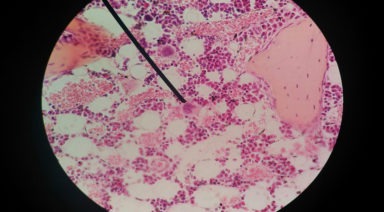Weaponized Ticks: Is Lyme Disease an Escaped Government Bioweapon?

Lyme disease is now a fairly common ailment, plaguing more than 300,000 people each year, and most people believe it to be an extremely unfortunate side effect of living in or near heavily wooded areas.
Although ticks are found all over the world, some are questioning why 95 percent of all confirmed Lyme disease cases are occurring in the United States. Investigators are looking into the possibility that the ticks blamed for spreading the disease may actually be carrying bioweapons that were never meant to escape from an island off the coast of New York.
What Is Lyme Disease?
According to the Centers for Disease Control and Prevention, Lyme disease is a bacteria-related illness that humans can contract when bitten by infected blacklegged ticks (Ixodes scapularis) — usually in New England, the Northwest coastline, and the mid-Atlantic and Northern midwestern states.
For the disease to actually take hold in a person, the infected tick must be attached to him or her for 36 to 48 hours. Usually adult ticks can be spotted and removed before they have a chance to spread the disease; it’s the young ticks, or the “nymphs,” that are generally smaller and difficult to spot, and therefore more dangerous.
An infected person will usually suffer early on from a skin rash, fatigue, flu-like symptoms (chills, fever, headache), muscle and joint pain, and swollen lymph nodes. Fortunately, the skin rash — which appears in the shape of a target with a bullseye, is fairly unique to Lyme disease, and can serve as a flag for physicians who are trained to spot it and who can then treat it properly before it gets out of control and begins to cause much more severe damage to the joints, nervous system, heart, and cognitive function.
Plum Island: The Source of a Lyme Bioweapon?
Off the coast of Long Island, New York, is Plum Island, home to a scientific-research facility that studies animal-borne diseases. It was originally used as a Spanish-American War military base before it was converted into a what became a curiously secretive institution in 1954. While the U.S. government claims the building was converted into a center to study foot-and-mouth disease in cattle, many believe it actually was installed as a laboratory used to facilitate anti-Soviet operations at the start of the Cold War.
The theory goes like this: As things were heating up with Soviet Union following WWII, the U.S. Government began recruiting Nazi scientists to help them lead a clever battle against the spread of communism, using biological weaponry. The Nazis were known for extensive experiments involving the weaponization of virus and disease, particularly under the leadership of the nefarious Nazi scientist Kurt Blome, who experimented with the use of mosquitoes and other insects as vectors for spreading the plague, malaria, and other pathogens.
The recruitment project was known as “Operation Paperclip,” and was responsible for importing prized German scientists and technicians from Europe, and putting them to work on Plum Island. Of these scientists was Erich Traub, who studied under Blome and specialized in vaccine and virus research as well as disease-carrying insects — in particular, the common tick.
Entomological warfare testing, including Operation Big Itch, Operation Big Buzz, Operation Dropkick, and Operation May Day all tested the viability of using mosquitoes and fleas to disseminate diseases like yellow fever across enemy territories.
If any insect was destined to become a biological weapon, the tick was near the top of the list. Ticks latch tightly onto living specimens and can be transported long distances, with the capability of infecting all animals they come into contact with — including human beings. Plus, they’re small, and when they lay eggs, they lay thousands at once.
The idea was to set thousands of ticks loose on the Soviet Union, where they would destroy the livestock, and thus a large amount of the food supply. In the end, however, the Pentagon decided not to damage the food supply (they didn’t want to become responsible for feeding millions of Soviets when they’d won the war), and called off the weaponized insects.
But, like so many science experiments, something may have gone terribly wrong. Exterminating all the ticks on Plum Island proved to be futile, especially when birds regularly flew from the mainland to the island and back. Perhaps not so coincidentally, in 1975, the first outbreak of Lyme occurred a few miles away, in Lyme, Connecticut.
The latest resurgence in the theory comes from the book “Bitten: The Secret History of Lyme Disease and Biological Weapons” written by Kris Newby, a Stanford University-based science writer, who was also featured in the 2009 documentary, Under Our Skin, which examined the debilitating effects of Lyme Disease and the lack of resources spent studying, or even acknowledging it by medical professionals.
The Argument Against
Because the numbers of people infected with Lyme Disease have increased in recent years, many people have, once again, been looking askance at Plum Island and the rumors that surround it. Just a few weeks ago, a House congressman led an effort to pass an amendment demanding the Pentagon investigate whether this horrific origin story is true.
While the Inspector General’s report has yet to be released, some scientists and mainstream publications have attempted to lay the matter to rest. An article published by Tufts University quotes Cummings School Professor Sam Telford, a leading expert on mosquito- and tick-borne infections: “‘This conspiracy theory was soundly debunked by research that David Persing and I did in the early 1990s.’”
The article goes on to say, “It turned out that the bacterium was circulating in wildlife long before Lyme disease became a known illness in humans. Ticks collected in 1945 from the eastern end of Long Island, and mice collected in 1894 on Cape Cod, were found to be infected with B. burgdorferi. This means that B. burgdorferi already existed in wildlife on Long Island—neighbor to Plum Island—for nearly ten years and on Cape Cod for fifty years before the time period in question.”
But while these scientists claim that Newby and others’ research into the government’s role in spreading Lyme disease is nothing but fringe conspiracy, they ignore the numerous aforementioned instances that set precedent for it's likelihood during Vietnam and the Cold War.
And whether or not the Senate report confirms or rejects the theory of Lyme disease’s story of origination, the primary concern to the public is now how to fend off the disease via the ticks themselves. Experts recommend that people should safeguard their homes by cleaning up areas around it that may attract rodents, and to be vigilant as to any insects they may be bringing home with after hiking, playing, camping, or working in or near the woods.
For more on Operation Paperclip check out this episode of Deep Space: The True History of the Space Race
Weather Modification Technology -- Decades of Ever-Increasing Tempo

Weather Modification Technology – Good Idea or Bad? The Science of Playing God and an Overview of the Technologies
To what extent people are able to control the weather is a bit of a mystery to most. It has been a goal for ages, and perhaps could even be considered the “final frontier” in dominating and controlling Mother Nature. Despite fairly familiar terms such as “cloud seeding,” most believe that controlling the weather on a large scale cannot be done. Control a hurricane? Nonsense! Besides, the idea of controlling the weather with weather modification technology or weather changing machines is a bit alarming to most people. The sheer arrogance of such a proposal has the flavor of “playing God.”
Indeed, even at our technologically advanced state, the inner and outer workings of our planet still hold many mysteries. Have humans really advanced enough to actively manipulate this balance without harming or disrupting the overall planet? Of course, this harmony has been disrupted by climate change, the causes of which continue to spark heated debate. Regardless, with the growing concern over our changing climate, is it possible that weather modification technology could help?




































